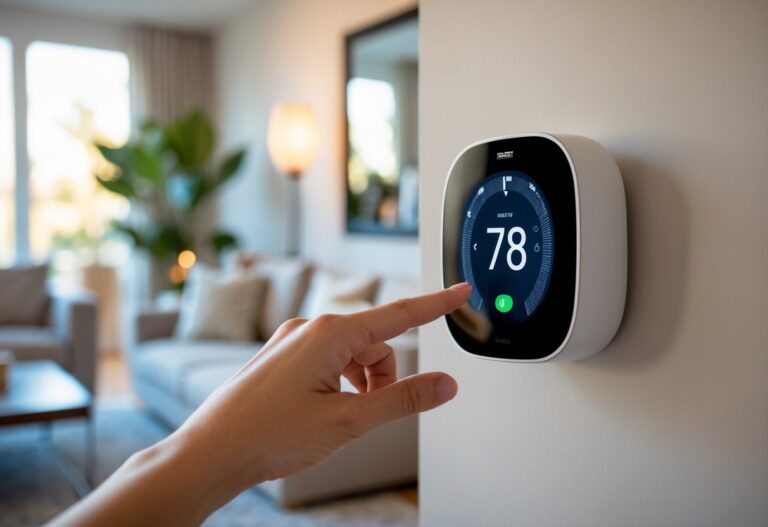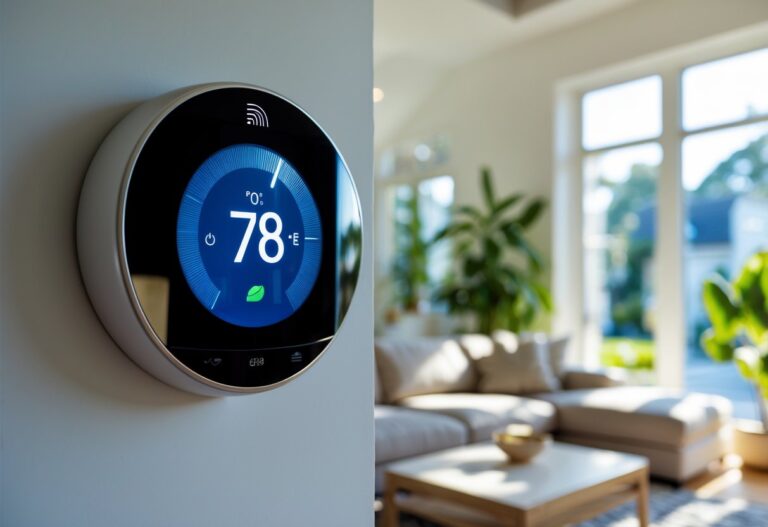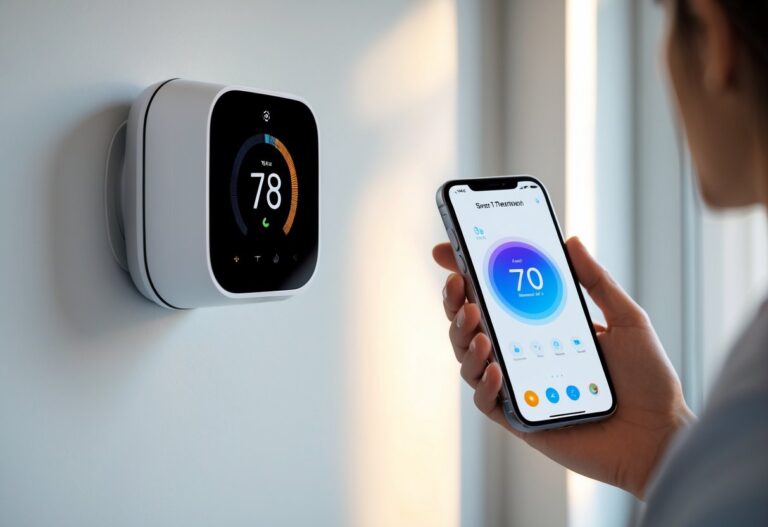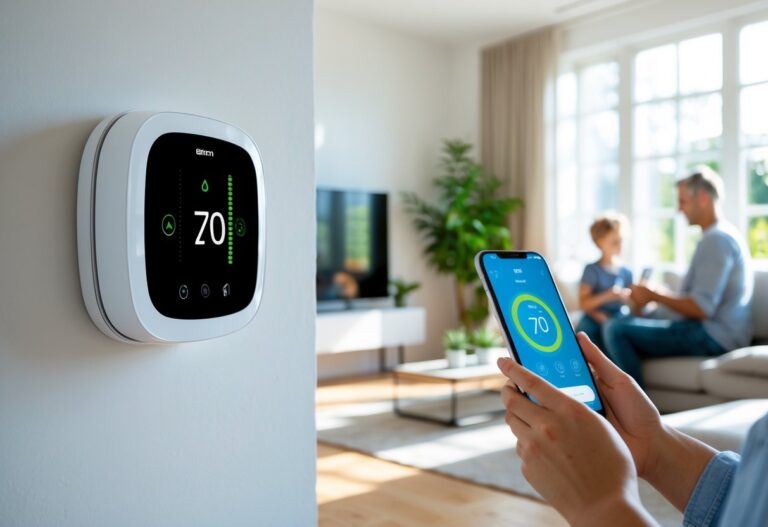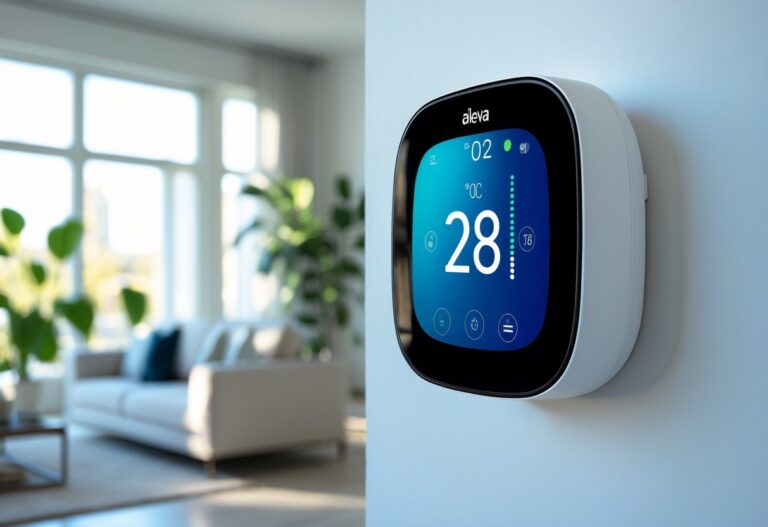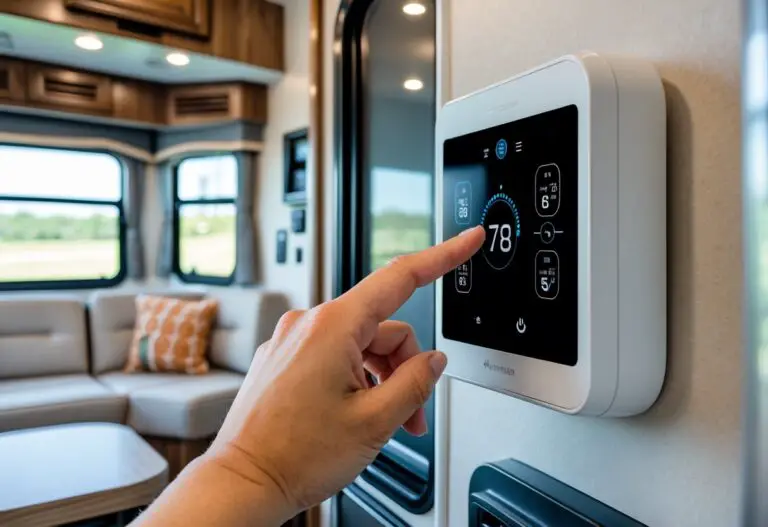Smart thermostats have changed the way you manage comfort at home, but you might wonder how long these helpful devices really last. Most smart thermostats work well for about 7 to 10 years before you might need a replacement. Knowing this can help you plan when to upgrade and make sure your house always stays at the right temperature.

How long your smart thermostat lasts depends on how much you use it, how well it’s cared for, and which brand you choose. Keeping your thermostat clean, updated, and in the right spot can make a big difference in how long it works smoothly. Stick around to learn what signs show it’s time for a new one and the top tips for making yours last.
Key Takeaways
- Most smart thermostats last 7 to 10 years.
- Lifespan depends on how you use and maintain the device.
- Watch for signs like lost accuracy or bugs to know when to replace yours.
Average Lifespan of Smart Thermostats
Smart thermostats usually last for several years, but their lifespan can depend on the type, brand, and how they are cared for. Knowing how smart thermostats compare to analog and digital types and what affects their longevity helps you plan for replacement or upgrades.
Typical Years of Operation
Most smart thermostats function well for 5 to 10 years. This estimate is based on component quality and the technology used. High-end brands or models with regular updates may last closer to 10 years, while lower-cost options may stop working sooner.
Key signs that your smart thermostat may need replacing include inaccurate readings, Wi-Fi connection problems, or screen malfunctions. Sensors and internal parts can wear out from heavy use or power surges. Regular maintenance—such as keeping the device clean and updating its software—can help extend life.
If your energy bills rise for no clear reason or your system cycles on and off more than normal, your thermostat might be the problem. Older technology may also stop working with newer heating or smart home systems.
Comparison With Analog and Digital Thermostats
Smart thermostats do not last as long as old analog thermostats, which often worked 10–30 years or more because they lacked electronics. Digital thermostats, including programmable types, generally last about 10–15 years with proper care, sitting between analog and smart models.
The main reason for the shorter lifespan of smart thermostats is their complex electronics and software, which are more prone to aging and becoming obsolete. Software support and compatibility with other devices can end before the hardware fails. However, smart thermostats offer more energy-saving features and convenience than basic analog thermostats.
| Thermostat Type | Typical Lifespan (years) |
|---|---|
| Analog | 10–30+ |
| Digital | 10–15 |
| Smart | 5–10 |
Brand and Model Variances
Lifespan can also vary depending on which brand or model you buy. Well-known brands such as the Nest Thermostat and Ecobee are built from high-quality components and often receive more frequent software updates. These updates keep the device secure and running longer.
Cheaper or lesser-known brands may have a shorter lifespan due to less reliable hardware or slower support. Some brands offer warranties ranging from one year up to five years, which gives you some guidance for expected longevity.
Different models, even within one brand, might use different types of sensors, batteries, or screens, which can affect how long they last. Checking reviews and the length of software support can help you choose a model that will serve you well for years.
Key Factors Influencing Longevity
The typical life of a smart thermostat depends on a mix of its design, where you put it, how often it runs, and the climate around it. Paying attention to these areas can help you avoid early failures and preserve energy efficiency in your home.
Quality of Manufacturing
The way a smart thermostat is built plays a big role in how long it works. Units made with high-quality components and updated technology tend to last longer than cheaper, basic models.
Look for brands with solid reputations and positive user reviews. These are more likely to use reliable circuit boards, sensors, and displays that hold up over years of use.
Features that signal better quality:
- Solid housing with a tight fit
- Clear, easy-to-read displays
- Updated firmware support
- Certification (such as ENERGY STAR)
A well-made thermostat will more easily handle power surges and the day-to-day operation of your HVAC system. If you pick a model with proven durability, you’ll likely get 5-10 years or more of steady performance.
Installation Best Practices
Proper installation is key to getting the most from your smart thermostat. If installed incorrectly, your device could have trouble reading room temperatures or may not control your HVAC system correctly.
It is best if a professional installer handles setup, especially if your home’s wiring is older or not standard. Errors during wiring can cause poor energy efficiency, short cycling, or even permanent damage.
Checklist for good installation:
- Ensure secure wiring connections
- Keep away from direct sunlight, drafts, or supply vents
- Double-check system compatibility (for heating, cooling, or dual fuel setups)
A smart thermostat that is installed right from the start will avoid false readings and unnecessary strain. This protects your investment and supports your home’s comfort.
Environmental Conditions
The spot where you place your thermostat has a major effect on its health. Exposure to direct sunlight, moisture, or very dusty areas can hurt sensitive electronics and shorten its working life.
Try to install your thermostat in a central, dry, and naturally ventilated space. Avoid placing it near doors, windows, kitchens, or places with high humidity like bathrooms.
Environmental risks to avoid:
| Risk | Impact on Thermostat |
|---|---|
| Direct sunlight | Overheating, false readings |
| High humidity | Corrosion of contacts |
| Excessive dust | Sensor failure, clogging |
Minimizing these hazards helps the device give accurate readings and maintain strong connections to your HVAC equipment.
Frequency of Use
How often you adjust your smart thermostat or switch settings can influence its lifespan. Frequent manual changes and constant cycling can cause the mechanical and electronic parts to wear out faster.
If your device is always being touched or set to extreme temperatures, it may show signs of wear, lose accuracy, or have display problems. Regular use within normal comfort ranges puts less pressure on the system.
Using features like automatic schedules and remote controls reduces unnecessary wear. A smart thermostat works best when it can run your heating or cooling system smoothly with fewer, smaller changes throughout the day. This extends its working years and helps keep your energy bills lower.
Signs It’s Time to Replace Your Smart Thermostat
Smart thermostats can develop problems as they age, from inaccurate temperature readings to higher electricity costs. Paying attention to warning signs can help you know when a thermostat replacement is needed for better comfort and efficiency.
Inaccurate Temperature Control
If you notice rooms feel too hot or too cold even though the thermostat is set correctly, it may not be reading temperatures right. This is one of the most common signs of a faulty thermostat.
Incorrect readings usually happen because sensors inside the thermostat wear out or become dirty over time. When this happens, your heating or cooling system might run too long or not enough, making temperature control difficult. If recalibrating or cleaning does not fix the problem, replacement is often the best option.
You may also see that the display shows temperatures that do not match other thermometers in your home. This can also point to a failing device. Accurate temperature control is important not just for comfort, but also for lowering energy bills and keeping your system running smoothly.
Short Cycling and System Issues
Short cycling is when your HVAC system turns on and off more often than normal. A faulty thermostat is one common cause of this problem.
Short cycling can wear out your furnace or air conditioner faster and may even cause mechanical damage. It also wastes energy, which will raise your utility costs. Smart thermostats that send incorrect signals to your heating or cooling system can create these rapid cycles. Listen for frequent clicking sounds or notice if rooms can’t reach your set temperature.
Table: Common System Issues Related to a Defective Thermostat
| Issue | Possible Cause | Effect |
|---|---|---|
| Frequent on-off | Sensor or relay failure | Higher energy bills |
| Blower runs too long | Stuck relay or bad wiring | Cold or warm drafts |
| System won’t start | Dead batteries or faulty unit | No heating or cooling |
If these problems are happening with your system, it is smart to consider a thermostat replacement.
Increased Energy Bills
A sudden rise in your energy bills may signal trouble with your smart thermostat. When your thermostat fails to control temperature accurately, your heating or cooling system works harder than it should.
Running your HVAC equipment more often uses more energy, which directly increases your monthly costs. Sometimes, the system can run when it should be off, because a broken thermostat is not sending the right signals. You might see energy spikes on your utility statements that you can’t explain, especially if your usage habits haven’t changed.
If these price increases line up with other issues, like rooms feeling uncomfortable or the system cycling on and off too much, your thermostat may be the cause. Replacing it can make your home more energy efficient and help bring your bills down.
Outdated Software or Unresponsive Controls
Smart thermostats depend on software and touch controls to work properly. As technology ages, older models may stop working with new apps, lose Wi-Fi connection, or fail to update.
Signs include:
- The screen freezes, flickers, or will not respond to touch.
- Settings reset on their own or schedules do not save.
- The device drops its connection or cannot be controlled from your smartphone.
Outdated software can make your smart thermostat unable to connect with other smart home devices. If you can no longer update your thermostat or the controls are no longer working, it becomes hard to use all its features. In these cases, a new thermostat may be the only way to restore full control and reliability.
Maintenance and Tips for Extending Lifespan
Keeping your smart thermostat in good shape helps it last longer, saves money, and keeps your energy use efficient. Daily care, correct settings, and regular updates prevent most common problems and help you get the best performance.
Regular Cleaning and Inspections
Dust and dirt can lower the accuracy and effectiveness of your smart thermostat. Wipe the surface gently with a soft, dry cloth every few weeks. Avoid using water or harsh cleaners that could damage the electronics.
Check the thermostat for any signs of wear or damage, such as loose wires or screws. If you notice problems, fix them early to stop minor issues from getting worse. Make sure the screen or display is clean so you can read the information clearly.
Set a reminder to inspect your thermostat at least once every three months. If you have pets or live in a dusty area, you might need to clean it more often. Clean surroundings protect the sensitive sensors and keep your system running smoothly.
Battery Replacement
Many smart thermostats run on batteries, especially when used with certain HVAC systems or during power outages. Old or weak batteries can lead to connection problems or unexpected shutdowns.
Check and change the batteries when you see low battery warnings, or at least once a year. Use the type of battery recommended in your device’s manual for best results.
If your smart thermostat is hardwired but has a backup battery, do not ignore it. A working backup battery can save your settings and prevent data loss during power cuts. Proper battery care also protects against unpredictable behavior, such as missed schedules or inaccurate temperature readings.
Software Updates and Connectivity
Manufacturers release software updates to fix bugs, improve energy efficiency, and add new features. Delaying updates can put your smart thermostat at risk for glitches or security issues.
Connect the thermostat to Wi-Fi, if it supports this, so updates download and install automatically. If your connection is weak, move your router closer or use a range extender for a stable signal.
Set your device to receive automatic updates, or check manually every few months if this is not possible. Staying up-to-date keeps your system secure and often extends the product’s useable life by adding useful improvements.
Optimizing Placement and Usage
Where you install your smart thermostat affects how well it measures room temperature. Place it on an interior wall, away from direct sunlight, windows, doors, or vents. This ensures accurate readings and reduces energy waste.
Avoid installing the device in kitchens, bathrooms, or next to electronic devices that can give off heat. Proper placement helps your thermostat control your HVAC system correctly and respond to your real comfort needs.
Limit frequent manual changes to the system’s temperature settings. Instead, program set schedules that match your daily routine. Stable and realistic scheduling reduces stress on both the thermostat and your heating and cooling system, helping both last longer and work more efficiently.
